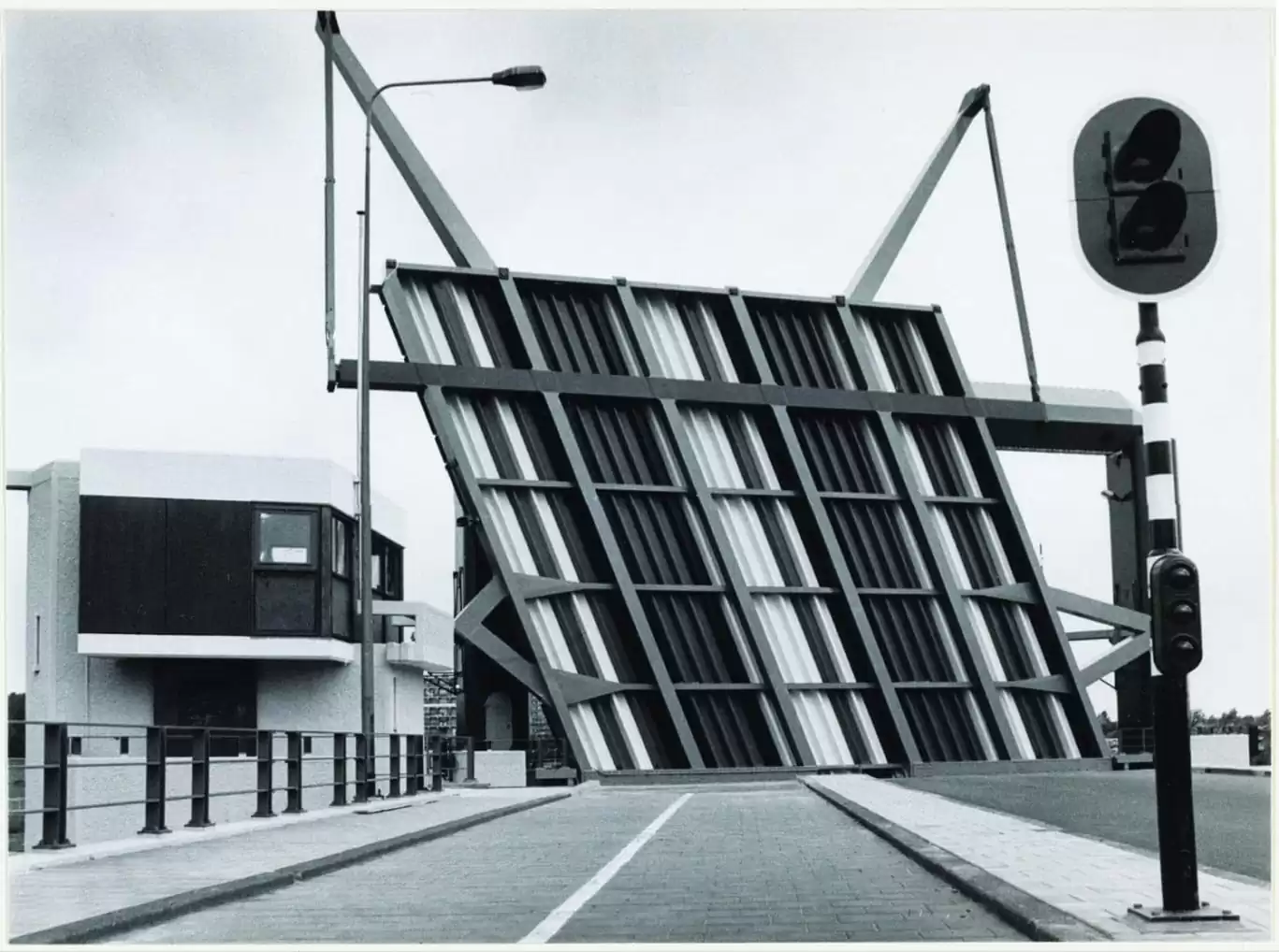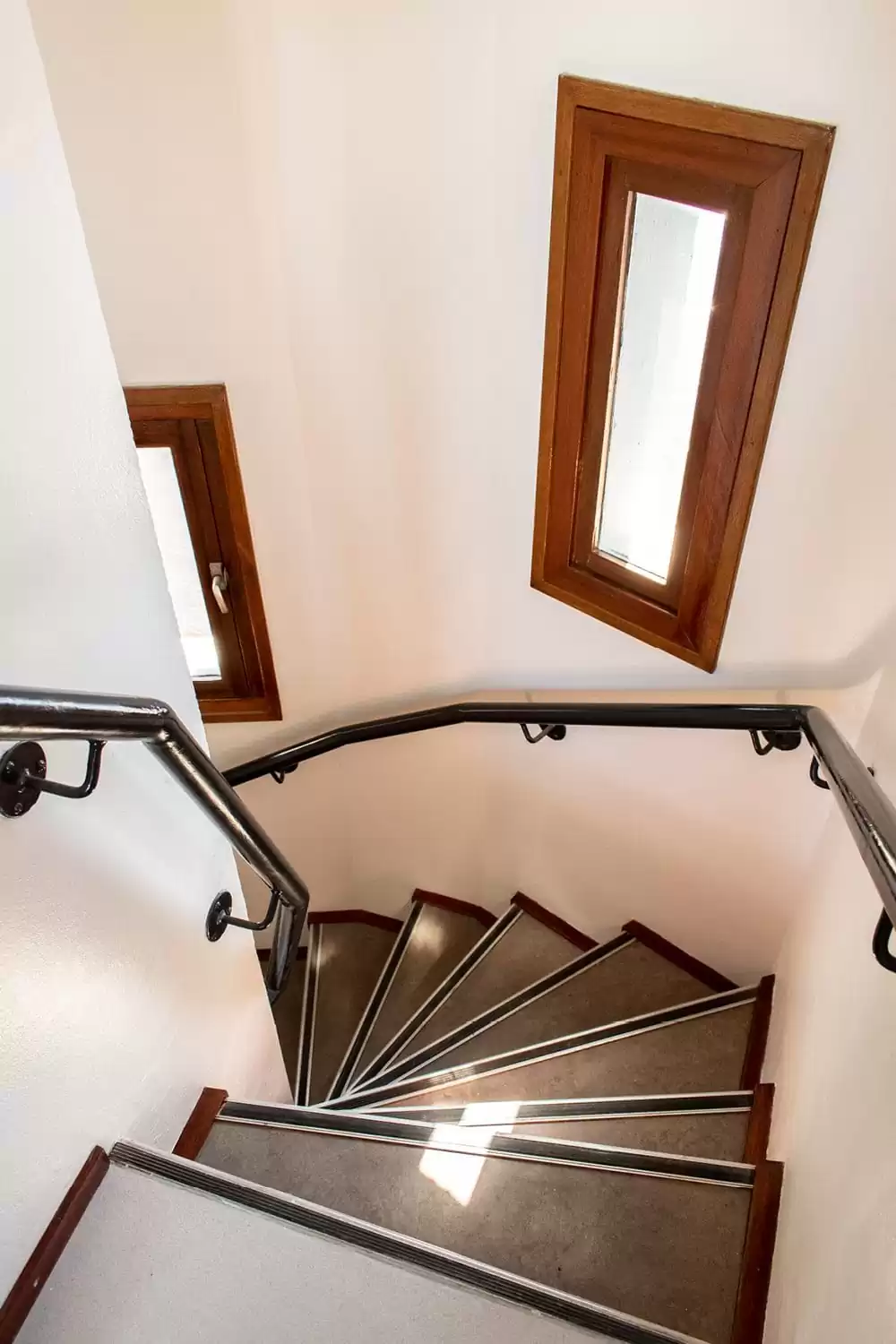Imagine yourself a Dutch painter from the Golden Age in bridge house IJdoornlaanbrug! Take a seat at the window by the bed and watch cloud formations float by above a windmill along the canal. On the other side, see the bridge – a work of art in itself – opening up for passing ships.
The comfortable interior of IJdoornlaanbrug consists of 2 storeys with custom-made wooden furniture and a spacious pink bathroom. Cocoon away in the cosy pillows reading your favourite book, or go out and explore Amsterdam and its surroundings. The typical Dutch area offers many popular walking and cycling routes – expect to see a lot of windmills!
This hotel room in Amsterdam Noord is the ideal starting point to visit both Amsterdam Centre (less than 15 minutes by public transport) and nearby must-sees like the Zaanse Schans and the historic towns of Volendam and Marken (15-20 minutes by car). Multiple affordable car parks are nearby, and part of the adjacent neighbourhood offers free parking on the streets.
SWEETS hotel’s IJdoornlaanbrug is within walking distance of bridge house 103. Buiksloterdraaibrug.
From 1975 to 2017 the IJdoornlaanbrug bridge house accommodated the city’s bridge keepers. In 2017 the bridge house started a new chapter as one of 28 suites for SWEETS hotel.
Architect 1975: Dirk Sterenberg
Architect 2017: Space&Matter
Architectural Style: Structuralism
Location: IJdoornlaan
Waterway: North Holland Canal
Bridge Type: Drawbridge
The colourful drawbridge over the Buikslotervaart (canal) was designed by Dirk Sterenberg in 1975. The design of the accompanying bridge house is robust and functional. The horizontal, panoramic windows gave the bridge keeper a good view of the roadway and the North Holland Canal. The red and blue of the vertical posts, the ‘arms’ that lift the bridge deck, are repeated in the building’s window frames. On the other side of the roadway was a platform from where the bridge basement could be accessed. The IJdoornlaanbrug bridge house is the last that Sterenberg designed. In comparison to his first bridge houses, this version shows a clear progression towards a more economical and functional design. Like Pieter Lodewijk Kramer’s bridge buildings, Sterenberg’s work is characterized by a strongly architectural formal idiom. However, functionality increasingly predominates his designs.
Before you book a SWEET stay, please read our house rules:


Still haven’t found what you’re looking for? Keep exploring other bridge houses.